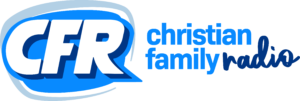As the cost of education continues to rise (and often outpace inflation), many parents and guardians have taken an interest in proactively saving for their children’s education. The most common vehicle used to save for education is called the ‘529 Plan.’ These accounts have been around for several years, and they are popular due to the tax-free growth the plan allows. As long as the funds are utilized for qualified educational expenses (tuition, books, etc.) the earnings are not taxed. However, the earnings are both taxed and penalized if they are used for expenses other than education. The one exception to this penalty is if a student receives a scholarship, and the funds are withdrawn dollar-for-dollar corresponding with the amount of the scholarship.
One new feature of the 529 Plan is that leftover amounts can now be rolled into a Roth IRA in the name of the beneficiary. This change provides considerably more flexibility for these accounts and allows the beneficiary a major head start on retirement savings should they not need the funds for college. Another change is the age of availability. Previously, these funds could only be used in college or beyond. Now, however, 529 funds can be used as early as Kindergarten.
If you are interested in implementing a 529 plan, make sure to speak with your financial professional to determine the best course of action for your household.
Clark Hayden, CFP®
Lockshield Partners

